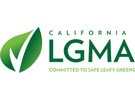A survey of member companies operating under the California Leafy Greens Marketing Agreement shows that producers are capable of quickly tracking product involved in an outbreak or recall.
Under FSMA’s Produce Safety Rule, farms are not considered registered facilities and thus are not required to have a traceback system in place by the federal government. Not so with the Leafy Greens Marketing Agreement (LGMA). Our program does require leafy greens farms to have a system to trace product back to the field where it was grown and forward to the first customer who receives it.
Verification that a traceback system is in place happens every time an LGMA member is audited by the government, which occurs about five times per year under our program. This means we can say with confidence that 100 percent of our members have a traceback system in place.
In an effort to learn more about the value of the LGMA traceability requirements and to assess the capabilities of our members’ traceback systems, we recently conducted a survey. Fifty-two of the California LGMA’s 93 members responded to a series of questions about their traceability programs, providing a 56 percent response rate. The respondents span a variety of operation types including large and mid-sized processors, large and mid-size commodity shippers and smaller specialty item grower shippers.
The goal of this survey is to better understand how leafy greens producers’ traceback systems are contributing to outbreak investigations and determine if there are additional requirements that could improve the speed and accuracy in finding the source of future outbreaks that may be linked to leafy green farms. The U.S. Food and Drug Administration has emphasized that improved traceback efficiencies could greatly enhance outbreak investigations.
Unfortunately, in recent outbreaks we’ve heard reports from government investigators that too many traceback systems involve antiquated paper-based systems. But we aren’t sure that’s actually the case. Through our survey, we did find that some (15%) of our members use paper-based systems, but the majority (85%) are using electronic systems.
What’s most important, however, is that 100% of survey respondents report they can trace product back to the field where it was grown in 2 hours or less, regardless of whether they had a paper-based or electronic system.
Additionally, the survey found the following:
- 100% of respondents report traceback systems capture information on activities involving growing and harvesting the product;
- 100% can identify the grower, ranch/field and date of harvest for all leafy greens they produce,
- 100% report they test their traceback systems at least once per year to verify it is working.
- 96% are capturing information on the harvest crew who picked the product.
According to Jennifer McEntire of United Fresh Produce Association, who is helping to coordinate this pilot project: “The goal of this Leafy Greens Traceability Pilot is to explore what traceback information is needed to assist government investigations and to test how that information can quickly be shared in a format that allows it to connect the supply chain,. The insights from the pilots will aid in more quickly and effectively locating the source of contamination during an actual outbreak.”
For more information: LGMA
LGMA
1521 "I" Street,
Sacramento, CA 95814
916-441-1240
info@lgma.ca.gov
lgma.ca.gov
